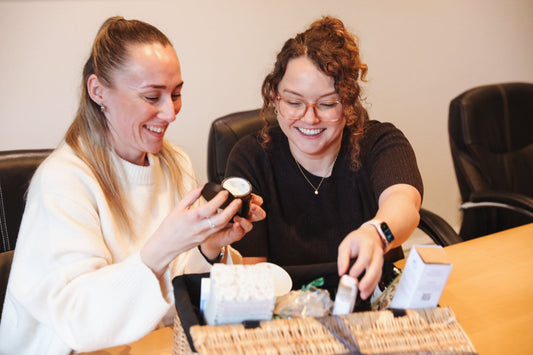Not Just Any Gift: Why Most People Get Gifting Wrong

Most people know the feeling. You unwrap something, smile politely, and quietly wonder what on earth made them think this was right for you. It is clearly a gift, but it does not feel personal. It is the sort of thing that was probably bought in a hurry, chosen because it felt safe, or worse, because it is something the giver would like themselves.
It is not a bad gift, but it does little. It is forgettable. And that is a shame, because a gift can do far more. When it is chosen well, it can make someone feel valued and remembered. It can strengthen a relationship. Done badly, it feels like a missed opportunity.
Why Most People Get Gifting Wrong
The main reason most people get gifting wrong is because they treat it as a task rather than a chance to connect. It is easy to default to something quick, assuming that cost or packaging will make up for the lack of thought. People fall back on habits, buying the same safe options each year or choosing things they would want themselves rather than considering the person they are buying for.
There is also a common belief that spending more makes a gift more meaningful. It rarely works like that. A luxury bottle of whisky for someone who never drinks, or a top-end gadget for someone who prefers experiences, sends a message that little effort was made to match the gift to the recipient. It shows money, but not care. Often, the gifts people remember most are not the most expensive but the most considered.
The Myths That Persist
Certain ideas about gifting keep going around, even though they rarely work in reality. The thought that men are not bothered by detail, so anything vaguely practical will do. That women will always be pleased with candles or flowers. That people will like what you like, so buying in your own taste is fine. Or that an expensive gift will automatically impress.
People notice detail when that detail feels personal. They value the effort when the gift reflects who they are, not just what was convenient to buy. A good gift feels as if it was chosen with the person in mind, not pulled from the shelf as an afterthought.
Examples of Good and Bad Gifting
Consider two examples. An employer sends every staff member the same bottle of champagne at Christmas. It looks generous, but half the team does not drink, and the gesture feels impersonal. Most of those bottles will be regifted or left untouched.
Now compare that to a company that takes the time to find out preferences: non-drinkers get gourmet treats, or a leather notebook and personalised pen, while those who enjoy wine receive a bottle selected for their tastes. The cost is similar, but the impact is far greater. The first feels like a tick-box exercise. The second feels like someone actually cared.
The same applies to personal gifting. A scented candle chosen from a supermarket shelf is fine, but it rarely excites. A gift that connects with someone’s interests: a more luxury candle or diffuser, a book by their favourite author, a personalised mug (we have created ones from briefs as diverse as: likes Padel, chicken nuggets and Diet Coke!), a framed photo from a shared memory, or even a simple but personalised item. These are the gifts that are remembered and talked about.
The Problem With Bad Gifting
A poor gift is not just uninspiring; it can leave a bad impression. It can suggest the giver has not paid attention or, worse, has not cared enough to. Even if it is neatly wrapped, a gift that misses the mark is a reminder that the thought behind it was rushed or absent.
Sometimes gifts are given just to tick a box. A business might send something because their competitors do and it is on their end-of-year checklist, or someone sends a token to ease their own guilt rather than because they genuinely want to. These gestures tend to be met with polite thanks and little else. They do not create loyalty, strengthen relationships, or make the recipient feel appreciated.
How to Get It Right
Good gifting starts with knowing the recipient. It is not about guessing or buying the first thing that looks nice. It is about thinking about what that person values, what would genuinely feel like it was meant for them, and choosing something that reflects that. The gift itself does not need to be extravagant. Small details - something beautifully co-ordinated in presentation, something that reflects their interests, or even a personal message engraved onto a gift or box, can turn something simple into something memorable.
In business, this becomes even more important. A well-chosen gift can help keep a valuable client, show appreciation to an employee, or turn a one-off buyer into a loyal customer. But that only happens if the gift feels personal and deliberate. A generic gift, however well presented, is unlikely to leave the same mark.
Why Businesses Cannot Afford to Get It Wrong
For companies, gifting is more than just tradition. It is often the only physical touchpoint with a client or employee all year. A good gift can strengthen trust and loyalty, while a generic one risks feeling like a token gesture. With so much competition for attention, a thoughtful gift can set a business apart and keep relationships strong.
The Point
Most people get gifting wrong because they see it as a duty. They give without thinking, focusing on the object instead of the person. A good gift is not just something to unwrap; it is something that leaves the recipient feeling understood and appreciated. That is what lasts.
If the aim is to make an impact, the focus has to be on the person receiving the gift, not the convenience of the giver. Anything less is just another item to put on a shelf, and nobody remembers those for long.













